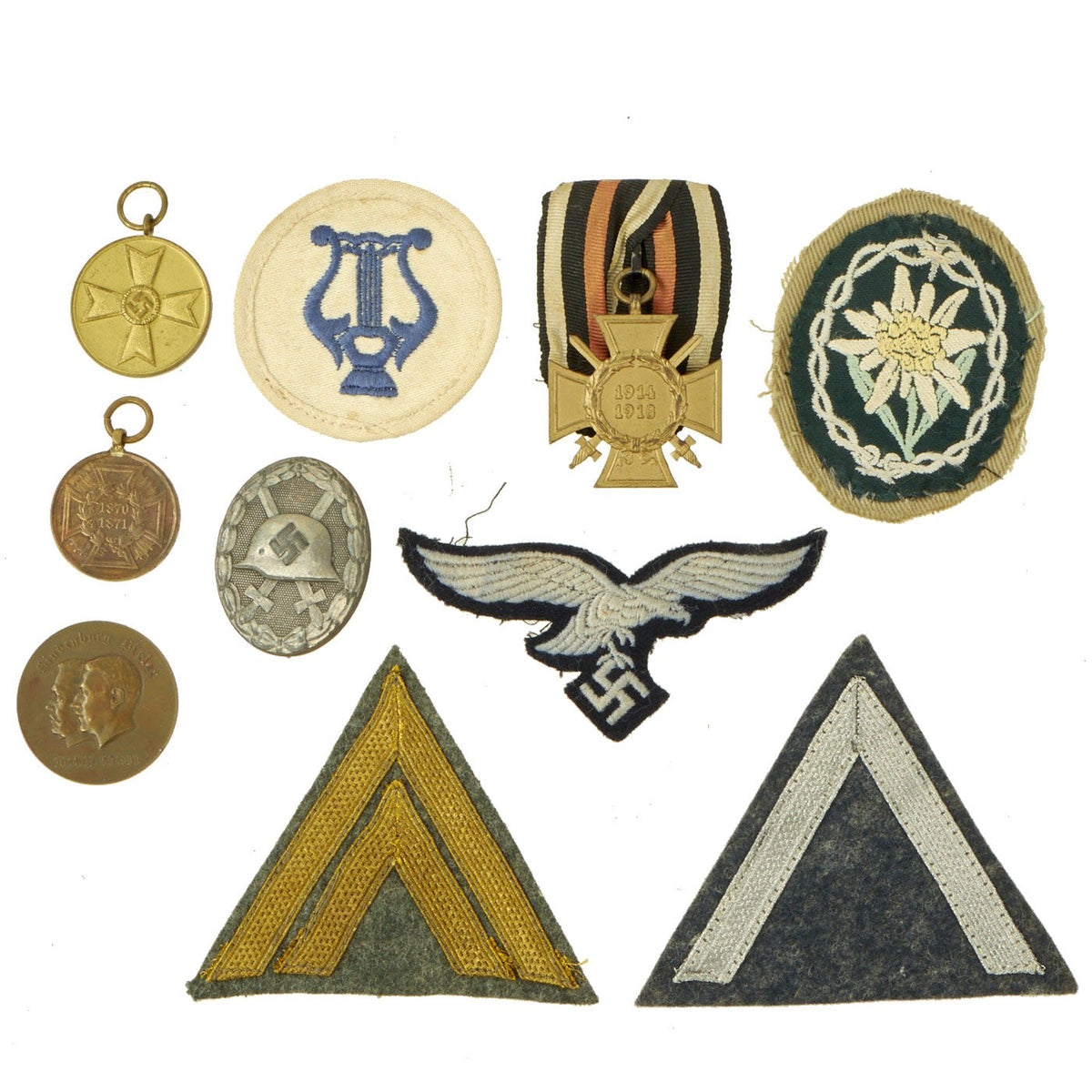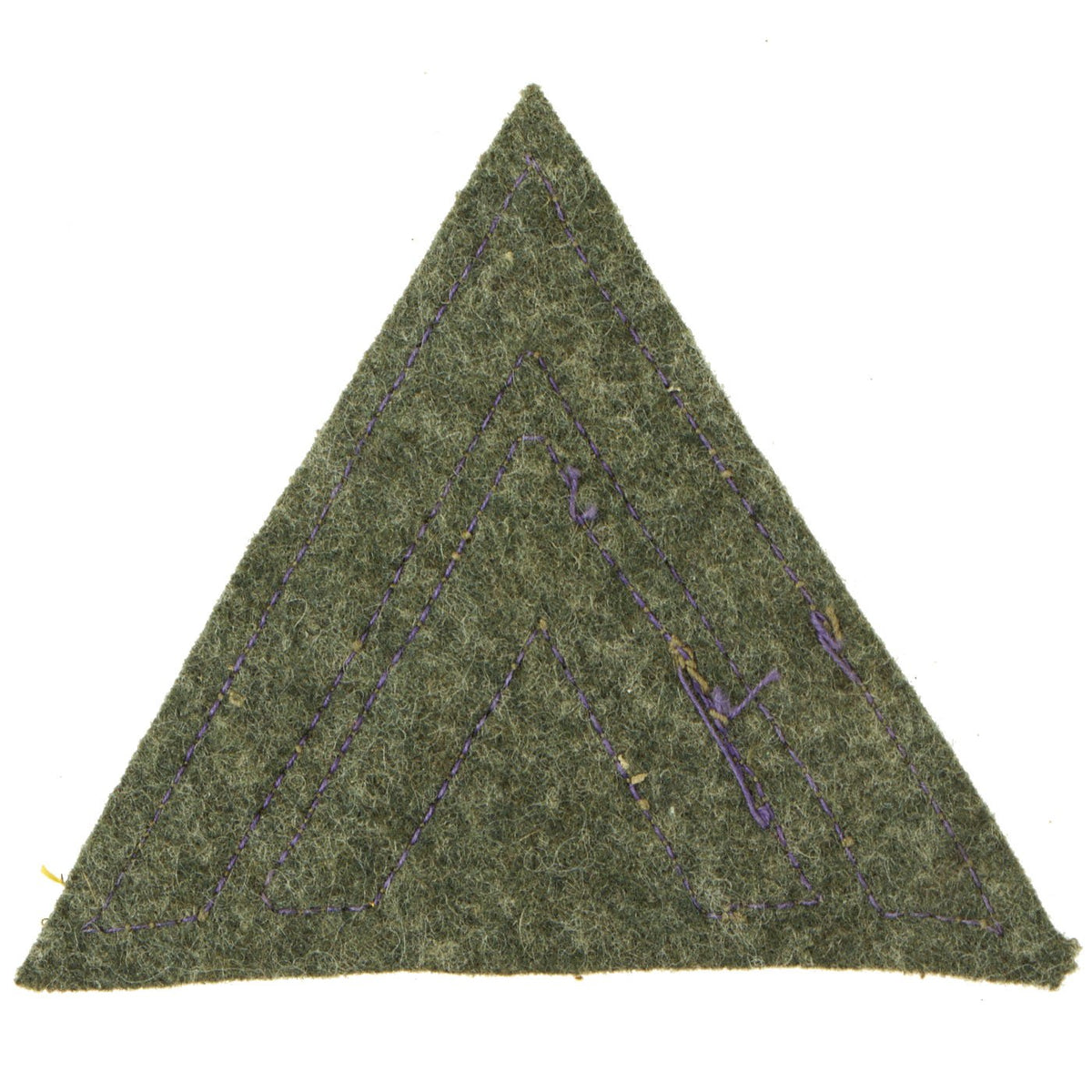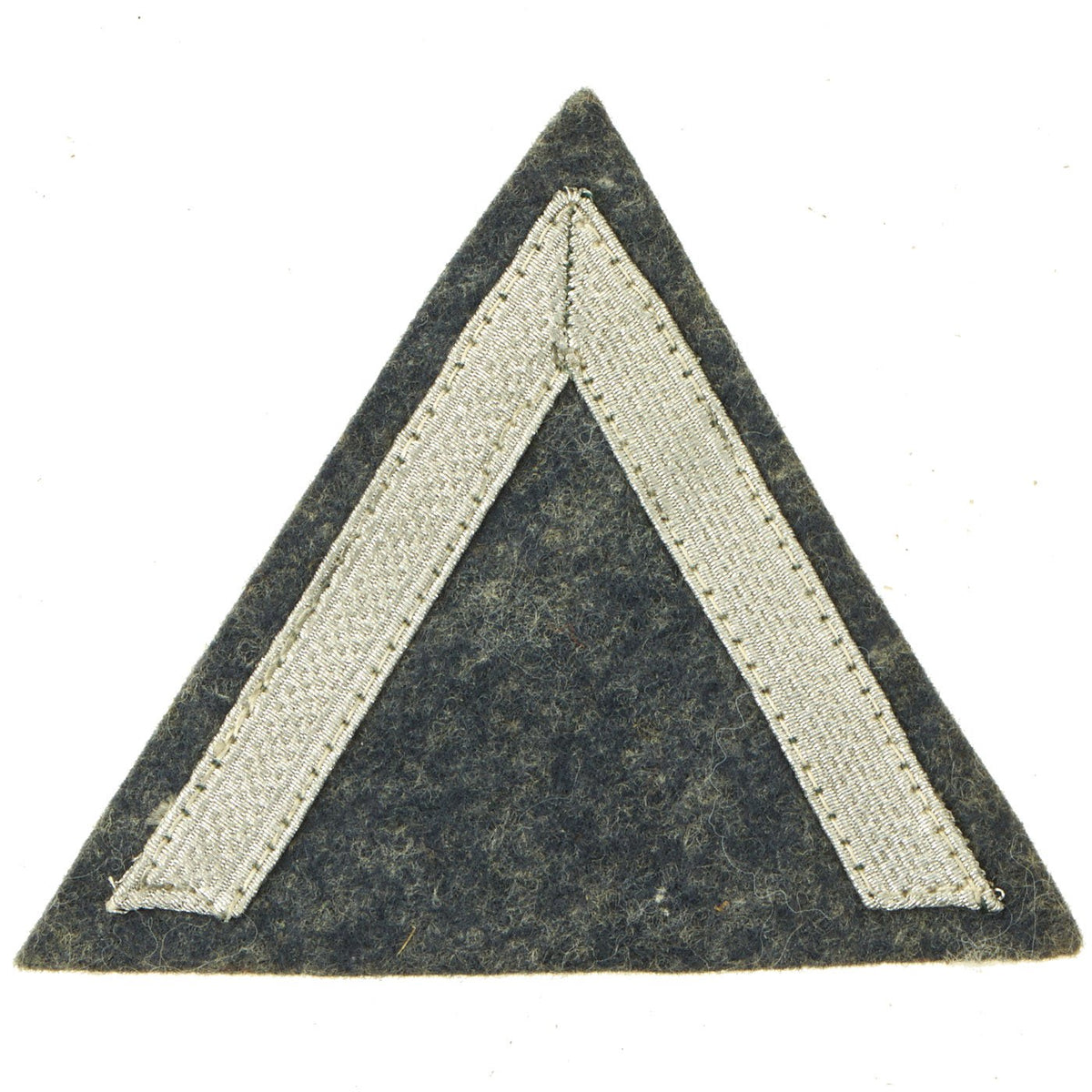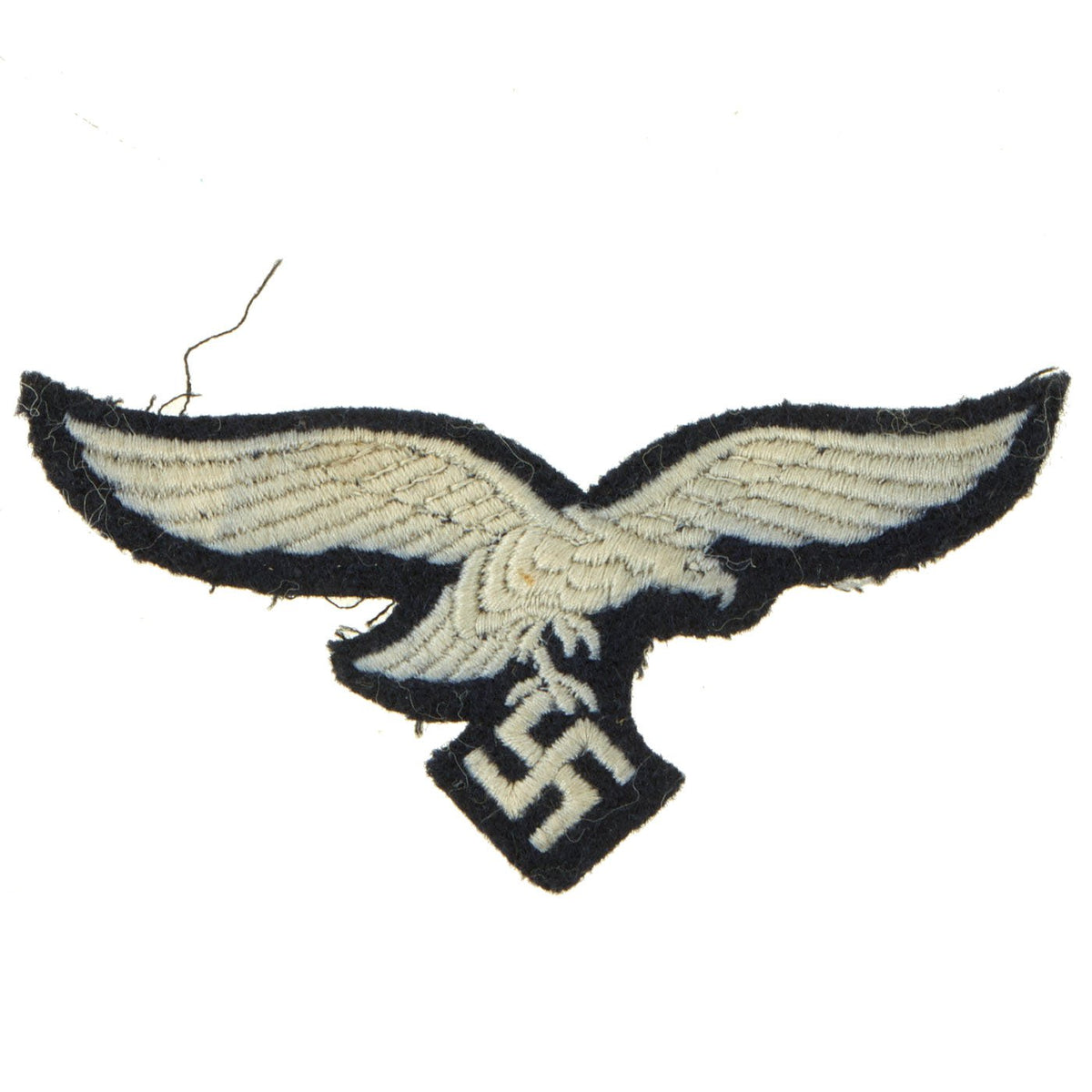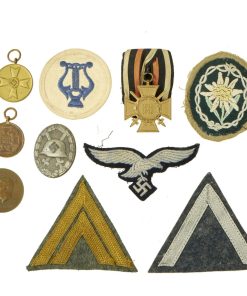Original German WWII Era Medal and Insignia Grouping with Wound Badge & Hindenberg Cross – 10 Items Original Items
$ 295,00 $ 118,00
Original Items: Only One Set Available. This is a very nice collection of German WWII Insignia & Awards, which was brought back from the European theater by a USGI after the war was concluded. It includes some a wide variety of medals and insignia, including a Hindenberg Cross, a Silver wound badge, and more!
This lovely set includes:
– One Pre-WWII German WWI Honor Cross of the World War 1914/1918 (Hindenburg Cross) Medal attached to a metal supported ribbon pin.
– One German WWII Solid Back Silver 2nd Class Wound Badge maker marked 30 for Hauptmünzamt (Main Mint), located at Am Heumarkt 1, Wien (Vienna) III/40, Austria.
– One German WWII 1939 War Merit Medal (Kriegsverdienstmedaille), without ribbon.
– One Imperial German War Commemorative Medal of 1870-1871 without Ribbon,
– One German WWII Heer Officer Gebirgsjäger Mountain Trooper Embroidered Sleeve Badge – Edelweiss. It is a uniform cutout, still attached to an oval piece of the uniform it was removed from.
– One German WWII Wehrmacht Heer Army Mannschaften (Enlisted Men) Double Gold Chevron badge.
– One German WWII Luftwaffe Air Force Mannschaften (Enlisted Men) Single Silver Chevron badge.
– One German WWII Luftwaffe Breast Eagle Embroidered Badge.
– One German WWII Musician Specialty badge.
– One German Pre-WWII Hindenburg AH Commemorative Medal 1933 Coin
A wonderful totally genuine grouping perfect for the German Medal and Insignia collector.
Hindenburg Cross with Crossed Swords (for combat):
The Honor Cross of the World War 1914/1918 (German: Das Ehrenkreuz des Weltkriegs 1914/1918), commonly, but incorrectly, known as the Hindenburg Cross was established by Field Marshal Paul von Hindenburg, President of the German Republic, by an order dated 13 July 1934, to commemorate the distinguished deeds of the German people during the First World War. This was Germany’s first official service medal for soldiers of Imperial Germany who had taken part in the war, and where they had since died it was also awarded to their surviving next-of-kin. Shortly after its issuance, the government of NSDAP Germany declared the award as the only official service decoration of the First World War and further forbid the continued wearing of German Free Corps awards on any military or paramilitary uniform of a state or NSDAP Party organization.
This example is marked on the back with G 18.
The German Wound Badge (Verwundetenabzeichen) was instituted by Kaiser Wilhelm II on 3 March 1918 during the First World War to recognize those wounded in the conflict. It was designed using a World War One style Imperial German Stahlhelm helmet as the main motif. The helmet was set on top two crossed swords against a pebbled background and surrounded by a laurel leaves wreath.
The Wound Badge Awards came in three different types of grades representing the amount , or severity, of wounds received. The first grade, the Black Wound Badge was awarded for 1 to 2 wounds received in combat. The Silver Grade was awarded for 3 to 4 wounds, and finally the Gold Grade for 5 or more wounds, total disability, or death.
The War Merit Medal (Kriegsverdienstmedaille) was a World War II German military decoration awarded to recognize outstanding service by civilians in relation to the war effort. It was instituted on 19 August 1940 and usually awarded to those workers in factories who significantly exceeded work quotas. The War Merit Medal was awarded only to Germans and non-Germans civilians, to men and women. An estimated 4.9 million medals were awarded by the end of the war in Europe. It was closely related to the War Merit Cross, which could be awarded to military personnel and civilians alike for outstanding service to the war effort.
The medal was designed by Professor Richard Klein of Munich. It was a circular bronze award bearing the design of the War Merit Cross on the front (obverse), and the inscription “For War Merit 1939” (Für Kriegsverdienst) on the reverse side. It was suspended from a ribbon colored similar to the War Merit Cross, except for a thin red vertical strip added to the center of the black portion. When worn, it was either as a medal ribbon bar above the left breast pocket (soldiers who had earned the medal as civilians could wear it on their uniform), or with the ribbon only through the second buttonhole of a jacket. Since this was a non-combat award, the medal never incorporated swords. After 15 May, 1943, the award of this medal to foreigners was superseded by the Medal of Merit of the Order of the German Eagle.
Fast Shipping with Professional Packaging
Thanks to our longstanding association with UPS FedEx DHL, and other major international carriers, we are able to provide a range of shipping options. Our warehouse staff is expertly trained and will wrap your products according to our exact and precise specifications. Prior to shipping, your goods will be thoroughly examined and securely secured. We ship to thousands clients each day across multiple countries. This shows how we're dedicated to be the largest retailer on the internet. Warehouses and distribution centres can be located throughout Europe as well as the USA.
Note: Orders with more than one item will be assigned a processing date depending on the item.
Before shipping before shipping, we'll conduct a thorough inspection of the items you have ordered. Today, the majority of orders will be delivered within 48 hours. The delivery time will be between 3-7 days.
Returns
The stock is dynamic and we cannot completely manage it because multiple stakeholders are involved, including our factory and warehouse. So the actual stock may alter at any time. It's possible that you may not receive your order once the order has been made.
Our policy is valid for a period of 30 days. If you don't receive the product within 30 days, we are not able to issue a refund or an exchange.
You can only return an item if it is unused and in the same state as the day you received it. You must have the item in its original packaging.
Related products
Uncategorized
Uncategorized
Uncategorized
Uncategorized
Uncategorized
Armored Burgonet Helmet & Polearm from Scottish Castle Leith Hall Circa 1700 Original Items
Uncategorized
Uncategorized
Uncategorized
Uncategorized
Uncategorized
Australian WWII Owen MK1 Machine Carbine SMG Custom Fabricated Replica with Sling Original Items
Uncategorized
Uncategorized
Angolan Rebel 1970s era 60mm Inert Display Mortar from Angolan Civil War Original Items
Uncategorized
Uncategorized
Uncategorized
Band of Brothers ORIGINAL GERMAN WWII Le. F.H. 18 10.5cm ARTILLERY PIECE Original Items
Uncategorized
Uncategorized
Uncategorized
Uncategorized
